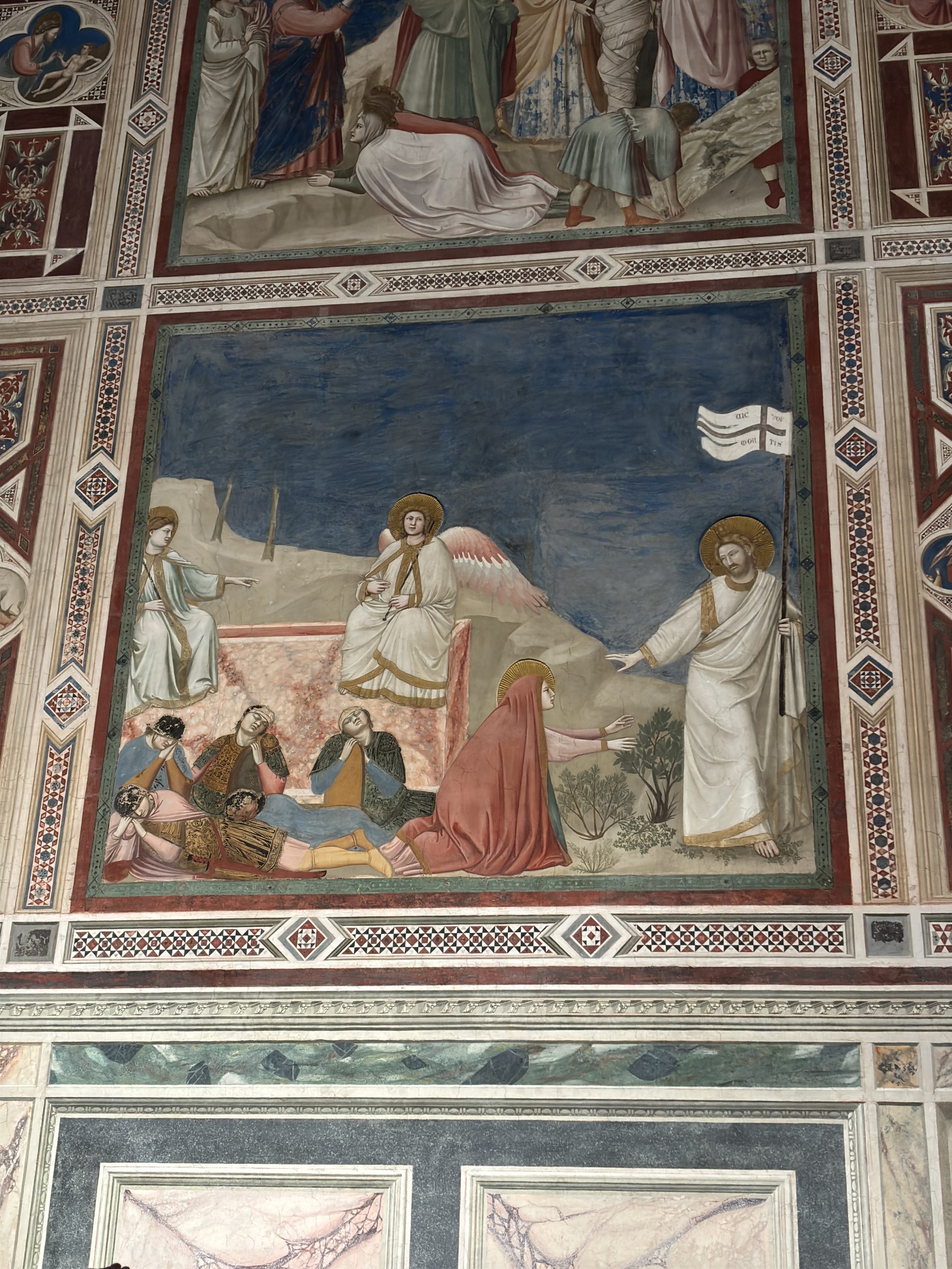
This painting is a panel in the Scrovegni Chapel, which is almost completely covered with a series of forty-two frescos, all but a few by Giotto. The panels are arranged as sequential visual narratives that tell the story of the life of Jesus and move the viewer on a journey of salvation. He developed a new style of painting that moved from the static mosaics of the Byzantine tradition to more expressive and realistic settings for his scenes. In this painting Giotto includes more than one event in a singular scene, which will become widely utilized in Fourteenth-century painting. On the left, the Roman guards of Christ’s tomb are sleeping, while angels rest on the empty tomb.
On the right, is Giotto’s rendition of the Noli me tangere (Do not touch me) theme where Mary Magdalene recognizes and reaches for the risen Christ. She is kneeling and leaning toward him with outstretched arms. Christ is walking away, using his body language as he advises Mary not to cling to his resurrected body, as he will be going back to the Father soon. Instead, he commissions Mary Magdalene to be the first to proclaim the resurrection.
On the right, is Giotto’s rendition of the Noli me tangere (Do not touch me) theme where Mary Magdalene recognizes and reaches for the risen Christ. She is kneeling and leaning toward him with outstretched arms. Christ is walking away, using his body language as he advises Mary not to cling to his resurrected body, as he will be going back to the Father soon. Instead, he commissions Mary Magdalene to be the first to proclaim the resurrection.
Title of Art: Noli Me Tangere
Subjects: Mary Magdalene, Jesus Christ
Subject Century: 1st
Ritual Pose/Object: kneeling, flag ("Conqueror of Death"), nimbus, tomb
Artist: Giotto
Art Form: Fresco
Date of Composition: 1303-1305
Event: resurrection
Exhibit Institution: Scovegni Chapel
Exhibit Location: Padua, Italy
VM Image #: 0138
Photographer: Kirstyn Wright
Date of Photograph: January 9, 2025
